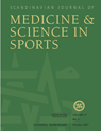Physical activity compensates for increased mortality risk among older people with poor muscle strength
Abstract
The aim of the study was to determine whether habitual physical activity can compensate for the increased mortality risk among older people with poor muscle strength. Mortality was followed up for 10 years after laboratory examination in 558 community dwelling 75- and 80-year-old men and women. Maximal isometric strength of five muscle groups was measured and tertile cut-off points were used to categorize participants. Participants, who reported moderate physical activity for at least 4 h a week, were categorized as physically active and the others as sedentary. High muscle strength and physical activity both protected from mortality, but their effect was not additive. Within each muscle strength tertile, physically active people had a lower mortality risk than sedentary people, the effect being most pronounced among those with lower strength in all muscle groups. A high level of physical activity may thus compensate for the increased mortality associated with low muscle strength.




